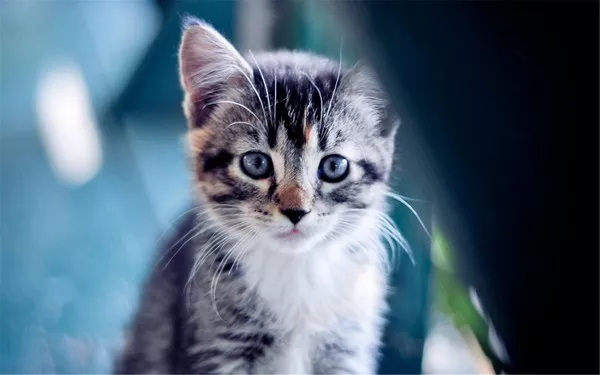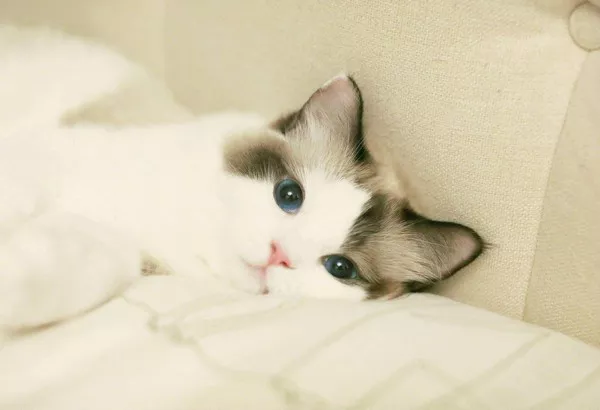Calico cats, with their distinctive tricolor coats, have captured the fascination of cat lovers for centuries. These striking felines are not just known for their eye-catching appearance but also for their intriguing personalities and genetic quirks. In this comprehensive exploration, we delve deep into what makes calico cats so special, uncovering the science behind their coat patterns, their historical significance, and the myths and legends that surround them.
The Genetics Behind the Coat: Understanding Calico Cat Patterns
At the heart of the calico cat‘s allure lies its mesmerizing coat, characterized by patches of white, black, and orange fur. But what exactly determines these intricate patterns? The answer lies in the cat’s genetics.
Calico cats are almost always female, and their unique coat patterns are the result of genetic inheritance. The gene responsible for coat color in cats is located on the X chromosome. Female cats typically have two X chromosomes, while males have one X and one Y chromosome. This means that female cats can inherit different color genes on each X chromosome, leading to the expression of multiple coat colors.
The calico coat pattern arises from a phenomenon known as X-inactivation, wherein one X chromosome in each cell becomes inactivated during early development. As a result, patches of fur with different color variations emerge, creating the distinctive calico pattern. This process is random and occurs independently in each cell, contributing to the unique mosaic appearance of calico cats.
Interestingly, male calico cats are exceedingly rare and typically result from genetic abnormalities such as Klinefelter syndrome, where the male cat possesses an extra X chromosome (XXY). These male calicos are sterile and face various health challenges due to their genetic makeup.
The Symbolism of Calico Cats in Culture and Folklore
Beyond their genetic makeup, calico cats have long been imbued with symbolic significance in various cultures around the world. In Japanese folklore, the “Maneki-neko” or beckoning cat, often depicted as a calico cat with one paw raised, is believed to bring good luck and prosperity to its owner.
Similarly, in American folklore, calico cats are sometimes associated with good fortune and protection from evil spirits. Sailors would often keep calico cats aboard their ships to safeguard against storms and ensure a safe voyage.
In some cultures, however, calico cats are viewed with superstition. For instance, in Celtic folklore, it was believed that calico cats could ward off evil spirits, but if a calico cat crossed your path, it was considered bad luck.
Despite these varied interpretations, one thing remains constant: calico cats have woven themselves into the fabric of human culture, symbolizing luck, protection, and the mysterious allure of the feline world.
Personality Traits: Exploring the Charismatic Nature of Calico Cats
Beyond their striking appearance and symbolic significance, calico cats are renowned for their unique personalities. While each cat is an individual with its own quirks and preferences, certain traits are commonly associated with calico cats.
Many calico cat owners describe their pets as affectionate yet independent, displaying a mix of playful energy and serene composure. Calico cats are often known for their intelligence and curiosity, eagerly exploring their surroundings and engaging in interactive play.
However, calico cats can also be strong-willed and assertive, exhibiting a characteristic “tortitude” reminiscent of their tortoiseshell counterparts. This blend of sassiness and sweetness endears them to their human companions, making them beloved members of the family.
It’s important to note that temperament can vary widely among individual cats, influenced by factors such as socialization, environment, and genetics. While some calico cats may be outgoing and sociable, others may be more reserved or shy. Understanding and respecting each cat’s unique personality is key to fostering a harmonious relationship.
Health Considerations: Addressing Potential Genetic Predispositions
While calico cats are cherished for their beauty and personality, they may also be prone to certain health issues associated with their genetics. One such condition is feline hyperesthesia syndrome, also known as “rippling skin disorder,” characterized by episodes of heightened sensitivity and twitching along the cat’s back.
Additionally, male calico cats, being XXY, are often sterile and may face health challenges associated with genetic abnormalities. It’s essential for calico cat owners to be aware of these potential health concerns and work closely with their veterinarian to ensure their pet’s well-being.
Regular veterinary check-ups, a balanced diet, and plenty of mental and physical stimulation are essential for maintaining the health and happiness of calico cats. By staying proactive and attentive to their needs, owners can help their calico companions thrive.
Conclusion: Celebrating the Timeless Allure of Calico Cats
In conclusion, calico cats are much more than just beautiful creatures with tricolor coats. They embody a rich tapestry of genetics, symbolism, and personality traits that have captivated humans for generations.
From the intricate patterns of their coats to their playful yet independent nature, calico cats continue to enchant and inspire cat lovers around the world. Whether they’re seen as symbols of good fortune or simply cherished as beloved companions, calico cats hold a special place in our hearts and imaginations.
As we continue to unravel the mysteries of these enchanting felines, one thing remains certain: the timeless allure of calico cats will endure for generations to come.
Related Topics:

























